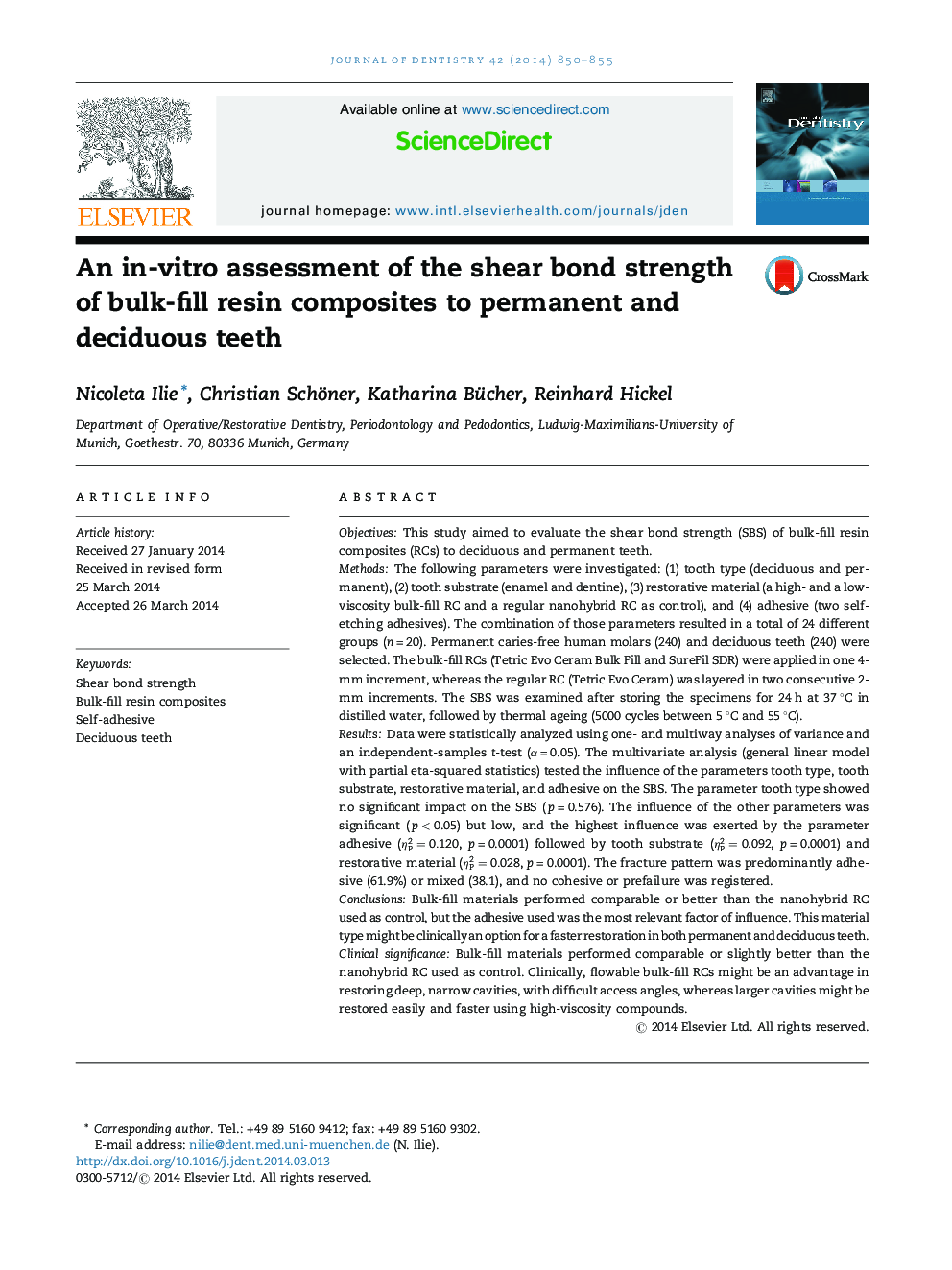| کد مقاله | کد نشریه | سال انتشار | مقاله انگلیسی | نسخه تمام متن |
|---|---|---|---|---|
| 6053770 | 1197153 | 2014 | 6 صفحه PDF | دانلود رایگان |
ObjectivesThis study aimed to evaluate the shear bond strength (SBS) of bulk-fill resin composites (RCs) to deciduous and permanent teeth.MethodsThe following parameters were investigated: (1) tooth type (deciduous and permanent), (2) tooth substrate (enamel and dentine), (3) restorative material (a high- and a low-viscosity bulk-fill RC and a regular nanohybrid RC as control), and (4) adhesive (two self-etching adhesives). The combination of those parameters resulted in a total of 24 different groups (n = 20). Permanent caries-free human molars (240) and deciduous teeth (240) were selected. The bulk-fill RCs (Tetric Evo Ceram Bulk Fill and SureFil SDR) were applied in one 4-mm increment, whereas the regular RC (Tetric Evo Ceram) was layered in two consecutive 2-mm increments. The SBS was examined after storing the specimens for 24 h at 37 °C in distilled water, followed by thermal ageing (5000 cycles between 5 °C and 55 °C).ResultsData were statistically analyzed using one- and multiway analyses of variance and an independent-samples t-test (α = 0.05). The multivariate analysis (general linear model with partial eta-squared statistics) tested the influence of the parameters tooth type, tooth substrate, restorative material, and adhesive on the SBS. The parameter tooth type showed no significant impact on the SBS (p = 0.576). The influence of the other parameters was significant (p < 0.05) but low, and the highest influence was exerted by the parameter adhesive (ηP2=0.120, p = 0.0001) followed by tooth substrate (ηP2=0.092, p = 0.0001) and restorative material (ηP2=0.028, p = 0.0001). The fracture pattern was predominantly adhesive (61.9%) or mixed (38.1), and no cohesive or prefailure was registered.ConclusionsBulk-fill materials performed comparable or better than the nanohybrid RC used as control, but the adhesive used was the most relevant factor of influence. This material type might be clinically an option for a faster restoration in both permanent and deciduous teeth.Clinical signiï¬canceBulk-ï¬ll materials performed comparable or slightly better than the nanohybrid RC used as control. Clinically, ï¬owable bulk-ï¬ll RCs might be an advantage in restoring deep, narrow cavities, with difï¬cult access angles, whereas larger cavities might be restored easily and faster using high-viscosity compounds.
Journal: Journal of Dentistry - Volume 42, Issue 7, July 2014, Pages 850-855
